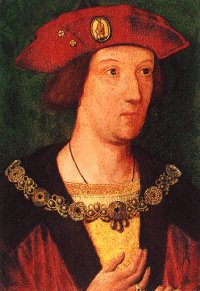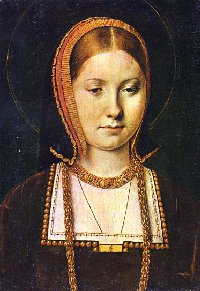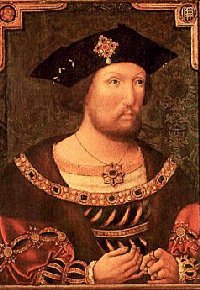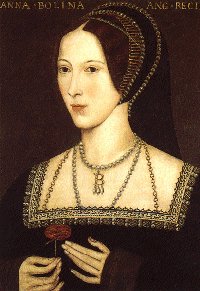Leviticus
& "The King's Great Matter"
Was
Henry VIII's marriage to Catherine of Aragon contrary to the teachings
of Leviticus?
The Texts
Leviticus 18:16
"Thou shalt not uncover the nakedness of thy brother's wife: it is thy
brother's nakedness."
|
Leviticus 20:21
"If a man shall take his brother's wife, it is an unclean thing...they
shall be childless."
|
The
Questions
Did
Arthur and Catherine have sexual relations during their brief marriage
and, if they did not, does the injunction of Leviticus still apply?
(Catherine claimed the marriage was never consummated.)
|
Did the Pope have the power to waive
the injunction in 1509, or is the injunction of Leviticus a matter of
divine law? (Henry suggested that the Pope had no power to waive
the injunction; Thomas More, a strong believer in Papal primacy,
disagreed.)
|
The marriage of Henry VIII's brother, Arthur Tudor, Prince of Wales

Arthur, Prince of Wales
|

Catherine of Aragon
|
Arthur Tudor,
Prince of Wales and the older brother of Henry, married Catherine of
Aragon in November 1501. Four months later, Arthur, who had been
the next in line to become King of England, died. Catherine
maintained that because of Arthur's poor health during their brief
marriage that the marriage was never consummated.
|
The marriage of Henry VIII to
Catherine

Henry VIII
|

Catherine
of Aragon
|
With the death of
his brother, Arthur, Henry Tudor (only 10 at the time of Arthur's
death) became the likely future King of England. That happened
with the death of his father, Henry VII, in April 1509. Two
months after becoming king, Henry VIII married his brother's former
wife, Catherine of Aragon. The injunction in Leviticus about
"taking" a "brother's wife" raised concerns. Prior to Henry
VIII's
marriage, permission to
marry Catherine had been sought and received from the Pope.
|
The marriage of Henry VIII to Ann
Boleyn

Henry VIII
|

Anne Boleyn
|
By 1526, Catherine
had produced only one child that survived past infancy, a girl.
(The girl, Mary, would later be known as "Bloody Mary.") Wanting
a male heir to the throne, and believing Catherine to be past prime
child-bearing years (and perhaps for other reasons), Henry VIII had his
eye on Anne Boleyn. Henry VIII told Catherine in 1527 that he
believed their eighteen-year-old marriage had been unlawful. He
instructed Cardinal Wolsey to begin efforts to secure an annulment of
his marriage to Catherine that would allow him to marry Anne
Boleyn. [Thomas More's involvement in this matter, which would
eventually lead to his trial and death, is a story told elsewhere on
this website.] Shortly after obtaining an annulment in 1533, Henry
married Anne. Three years later, Henry had Anne beheaded in the
Tower of London--and then he was off to the third of his six wives.
|
|